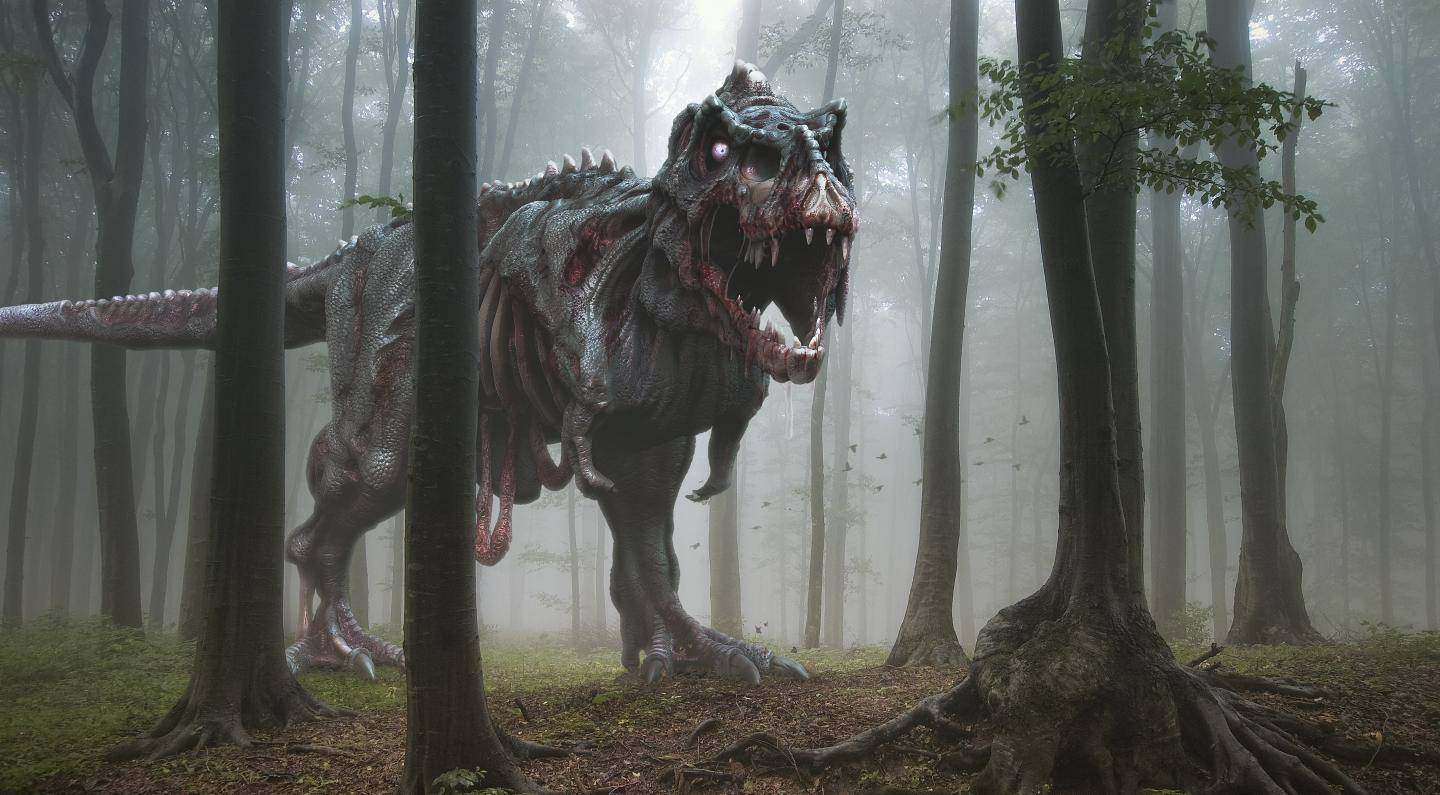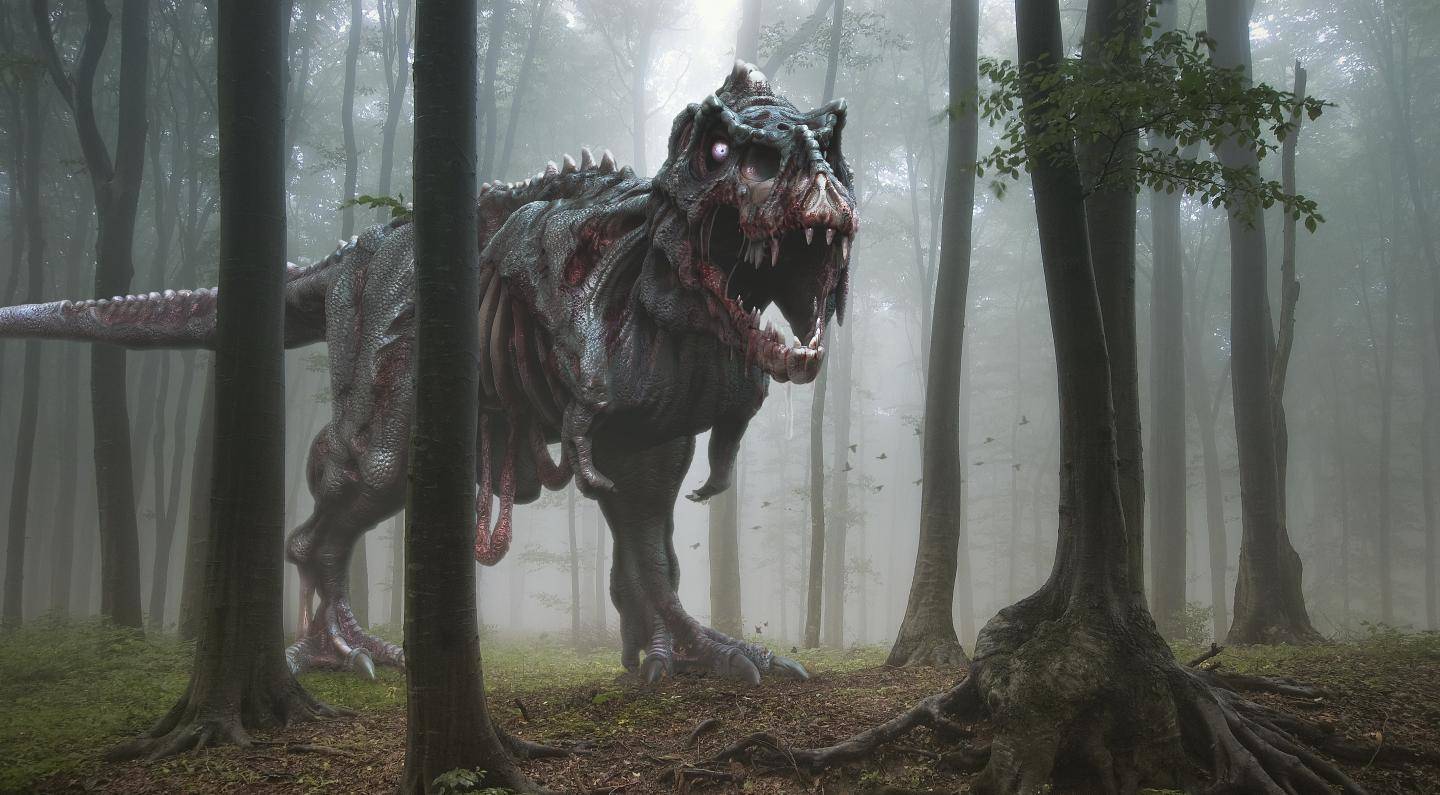
Credit: Herschel Hoffmeyer
New research has revealed how the history of life can be distorted by the ways animals decompose and lose body parts as they decay – and the ways in which decayed bodies ultimately become fossilised.
In a new study published in the journal Palaeontology, a group of palaeontologists from the UK and Ireland, led by the University of Leicester, has followed a macabre, and nasally-challenging road to knowledge – watching carefully as animal carcasses decompose in order to better understand the process.
Like on-screen zombies in popular TV programmes such as The Walking Dead that gradually deteriorate through time, fossils preserve only incomplete remains of the living body.
A key part of palaeontological research involves reconstructing long-extinct creatures to understand what they were like when they were alive. This knowledge allows us to answer fundamental questions – how did they move and interact with their environment? How did they feed and reproduce? Which of today's organisms are they most like and most closely related to?
Understanding how much of a fossil is missing, and what has been changed by decay and fossilisation, helps to create a more accurate picture of ancient animals and ecosystems. This is particularly important for things lacking hard skeletons and shells – including crucial fossil evidence of early animal life on Earth.
"As soon as an organism dies, it starts to decay, and this process of decomposition inevitably involves changes in how features or body parts look: they may collapse, alter their shape or position; all too soon they liquefy and are eaten by bacteria until nothing remains," says Professor Sarah Gabbott from the University of Leicester's School of Geography, Geology and the Environment.
Professor Mark Purnell, lead author of the study adds: "The more a body deteriorates over time, the more body-parts are missing – rather like modern representations of zombies in Game of Thrones and The Walking Dead.
"One consequence of this decay is that palaeontologists have to work with incomplete fossils. Some of the features that are present don't look anything like they did when the animal was alive, and many features are missing completely. The trick is to be able to recognise partially-decomposed features, and where body parts have rotted away completely."
The approach used in the UK-Irish collaboration involves 'laboratory decay experiments': keeping careful records of every body part as it decays away.
The results of rotting a whole range of dead animals, from hagfish and lampreys (primitive eel-like creatures) to insects and various worms, show that carefully designed experiments provide unique insights into the processes of decomposition and fossilisation.
In the new paper they highlight the importance of understanding how a fossil is formed before trying to reconstruct it – how the processes of decay that lead to loss of body parts interact with the processes that cause them to become preserved and fossilised.
Dr Maria McNamara, collaborator in the study, adds: "If we understand this we are better able to avoid producing incomplete restorations of animals with crucial parts missing or decayed, and to recognize and be aware of the gaps in our knowledge,".
###
Artist's impression of a zombie T. rex is available here*: https://www.dropbox.com/sh/s1xlmidzxv6pbjv/AAD9Ib1c7SFqBIrVIT5n8W_Ra?dl=0
The paper, 'Experimental Analysis of Soft-Tissue Fossilization: Opening the Black Box', published in the journal Palaeontology, is available here: https://doi.org/10.1111/pala.12360
The research is supported by the Natural Environment Research Council.
Media Contact
Sarah Gabbott
[email protected]
@UoLNewsCentre
http://www.leicester.ac.uk
Related Journal Article
http://dx.doi.org/10.1111/pala.12360





